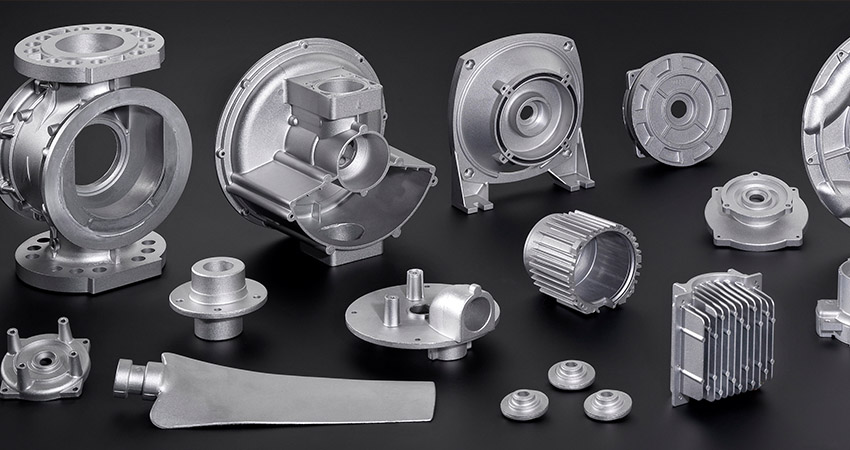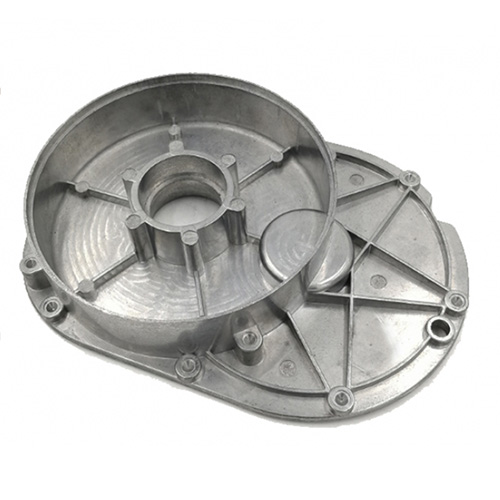Why choose Aluminum Casting over competing processes
Whatever You Need to Learn About the Uses and Advantages of Aluminum Castings
Aluminum castings play an important function throughout different industries, offering unique residential properties that enhance item efficiency. Their light-weight nature and toughness make them suitable for applications in automobile and aerospace industries. Furthermore, the flexibility of casting techniques allows for elaborate styles and tight resistances. As the need for sustainable services rises, understanding the advantages and applications of aluminum castings becomes progressively crucial. What certain advantages do they use over other materials?
Summary of Aluminum Casting Processes
Aluminum casting procedures encompass a range of methods used to shape molten aluminum into preferred kinds. These approaches consist of sand spreading, pass away casting, and financial investment casting, each offering distinct benefits depending on the application (Aluminum Casting). Sand casting includes producing a mold and mildew from sand, enabling detailed layouts and huge elements, while die casting utilizes high stress to inject molten aluminum into metal mold and mildews, making certain accuracy and smooth surfaces. Investment casting, likewise referred to as lost-wax spreading, creates complicated shapes with superb dimensional accuracy, making it appropriate for in-depth components
These procedures are identified by their capacity to create light-weight, durable parts that show excellent rust resistance. The versatility of aluminum permits modification in different industries, from automotive to aerospace. Additionally, the ability to recycle aluminum enhances the sustainability of these casting procedures, reducing environmental impact while keeping product honesty. Understanding these strategies is necessary for maximizing manufacturing performance and achieving high-quality aluminum castings.
Key Applications of Aluminum Castings
Aluminum castings play an important duty throughout various markets, specifically in auto, aerospace, and customer electronics. In the automobile sector, they add to light-weight structures that improve gas effectiveness. Aerospace components benefit from aluminum's strength-to-weight proportion, while customer electronics take advantage of its versatility for effective production.
Automotive Market Applications
As the vehicle sector proceeds to progress, manufacturers progressively rely on aluminum castings for their light-weight yet long lasting residential properties. These castings play an important role in improving automobile efficiency, gas efficiency, and overall security. Trick applications include engine blocks, transmission housings, and architectural elements, which benefit from aluminum's superb strength-to-weight ratio. Furthermore, aluminum castings help with intricate geometries, allowing for innovative layouts that enhance the rules of aerodynamics and decrease drag. The corrosion resistance of aluminum also adds to durability, minimizing upkeep costs for both makers and consumers. As electrical automobiles gain popularity, aluminum castings are vital for battery enclosures and other elements, further solidifying their importance in the future of auto manufacturing.
Aerospace Element Production
In the aerospace industry, aluminum castings are essential to the manufacturing of lightweight, high-performance elements. These castings are important for producing parts such as engine housings, structural frameworks, and touchdown equipment parts, where weight reduction is crucial for gas performance and overall efficiency. The outstanding strength-to-weight proportion of aluminum permits the development of complex geometries that enhance aerodynamics. In addition, aluminum's resistance to deterioration adds to the durability and reliability of aerospace parts, ensuring security in flight procedures. The spreading process also enables specific tolerances, which is essential in conference rigid aerospace market criteria. In general, aluminum castings play a critical function in progressing aerospace modern technology while supporting the sector's press for sustainable practices.
Customer Electronics Production
The usage of aluminum castings in customer electronic devices manufacturing has actually become progressively substantial as a result of their lightweight and resilient homes. Suppliers leverage these castings to produce parts for various gadgets, consisting of smart devices, laptops, and gaming consoles. Aluminum's superb thermal conductivity likewise assists in heat dissipation, enhancing device performance and durability. The versatility of aluminum allows for elaborate styles and complex geometries, making it possible for sleek and modern visual appeals that appeal to consumers. Furthermore, aluminum castings can be conveniently reused, straightening with the growing demand for lasting production practices. As technology advances, the duty of aluminum castings in establishing innovative and reliable customer electronics is anticipated to broaden, making them a staple in the market.

Advantages of Using Aluminum Castings
While numerous materials are offered for casting, aluminum attracts attention because of its unique mix of light-weight buildings, stamina, and deterioration resistance. The reduced density of aluminum makes it an excellent option for applications where weight decrease is important, such as in the vehicle and aerospace industries. Its excellent strength-to-weight proportion enables suppliers to produce durable parts without including excessive weight.
In addition, aluminum castings can be generated with intricate styles and limited tolerances, enabling intricate geometries that are hard to accomplish with other materials. The convenience of aluminum allows for different casting methods, including sand, pass away, and investment spreading, catering to diverse manufacturing needs. In addition, aluminum's ease of machining and finishing improves its charm, promoting the creation of premium surface area coatings. Generally, the benefits of making use of aluminum castings contribute to enhanced performance and effectiveness in countless applications across different fields.
Deterioration Resistance in Aluminum Castings

Natural Oxide Layer
A natural oxide layer kinds on the surface area of aluminum castings, offering a crucial obstacle against environmental elements that can lead to deterioration. This slim, protective movie is an outcome of the aluminum's response with oxygen in the air, properly protecting the underlying metal from moisture, chemicals, and toxins. Because of this, aluminum castings display outstanding corrosion resistance, which boosts their long life and durability in various applications. The oxide layer is not just useful for security but also adds to visual qualities, as it can create a matte finish that lots of industries like. Furthermore, this all-natural process lessens the need for extra coverings, making aluminum castings a cost-efficient option for suppliers seeking trustworthy, lasting products.
Alloy Variants Impact
The structure of aluminum alloys greatly influences their deterioration resistance properties in castings. Different alloy variants, such as 1xxx, 2xxx, and 6xxx series, display distinct levels of vulnerability to corrosion. 1xxx alloys, mainly made up of pure aluminum, offer outstanding rust resistance due to their high pureness. In contrast, 2xxx alloys, which have copper, might experience considerable deterioration when revealed to severe environments. At the same time, 6xxx alloys, incorporating magnesium and silicon, strike an equilibrium in between strength and resistance. The existence of alloying elements can boost or diminish safety oxide layers, inevitably affecting longevity and performance. Comprehending these variants is vital for choosing the appropriate alloy for specific applications where rust resistance is vital.
Style Versatility and Customization
Although numerous materials exist for casting applications, aluminum stands apart because of its remarkable design versatility and possibility for customization. This versatility permits developers and designers to create detailed shapes and forms that fulfill specific functional requirements. Aluminum Casting. The low density of aluminum allows lightweight layouts, which is specifically advantageous in sectors such as automotive and aerospace, where weight decrease is vital
Aluminum castings can be customized to numerous specs, consisting of wall surface thickness, surface area finish, and dimensional tolerances. This versatility not only boosts the aesthetic appeal yet also enhances the efficiency of the last product. Furthermore, advanced techniques such as 3D printing and computer-aided design (CAD) additional promote the customization process, allowing quick prototyping and minimizing lead times. Consequently, aluminum castings can efficiently satisfy the diverse needs of different sectors while using manufacturers the capability to innovate and respond promptly to market needs.
Comparison With Other Casting Products
While different casting products each have their unique advantages, aluminum constantly shows exceptional residential or commercial properties that make it a preferred choice in many applications. Compared to iron and steel, aluminum is significantly lighter, which reduces the general weight of More Help ended up items, enhancing gas effectiveness in automotive and aerospace industries. Additionally, aluminum supplies outstanding rust resistance, calling for much less upkeep link with time contrasted to products like iron, which can corrosion.
When compared with plastics, aluminum's toughness and longevity go beyond numerous artificial options, making it suitable for demanding settings. Furthermore, aluminum's thermal and electric conductivity is incredibly greater than many various other steels, making it optimal for applications calling for effective heat dissipation or electrical elements.

Future Patterns in Aluminum Casting Innovation
Improvements in aluminum casting technology are readied to redefine its applications throughout numerous industries. Innovations in automation and robotics are improving production procedures, improving effectiveness and accuracy. The assimilation of expert system and artificial intelligence allows real-time tracking and predictive maintenance, decreasing downtime and enhancing quality assurance.
Moreover, the growth of sophisticated alloys is increasing the performance abilities of aluminum castings, making them suitable for even more demanding applications, specifically in automotive and aerospace markets. Lasting methods are likewise acquiring grip, with increased emphasis on reusing aluminum and reducing carbon impacts throughout manufacturing.
Additive manufacturing techniques, such as 3D printing, are being explored to create intricate geometries that standard techniques can not achieve, enabling better design adaptability. These patterns show a future where aluminum spreading will not only meet but go beyond industry expectations, driving development and sustainability in production.
Often Asked Inquiries
Just How Are Aluminum Castings Recycled After Usage?
Aluminum castings are commonly accumulated, cleaned, and refined in recycling centers. The product is melted down, fine-tuned, and afterwards changed right into brand-new products, therefore saving resources and decreasing ecological effect while maintaining aluminum's preferable residential or commercial properties.
What Are the Common Expenses Related To Aluminum Castings?
The normal costs connected with aluminum castings vary based upon variables such as complexity, quantity, and material specs. Generally, prices vary from a few bucks per pound to considerably higher amounts for detailed designs and huge amounts.
How Do Aluminum Castings Compare in Weight to Steel Castings?
Aluminum castings consider substantially much less than steel castings, normally around one-third the weight (Aluminum Casting). This reduced mass enables easier handling, transport, and application in various sectors, contributing to improved efficiency in layout and production processes
What Industries Mostly Depend On Aluminum Castings?
Various markets substantially depend on aluminum castings, including vehicle, aerospace, electronic devices, and customer products. Their lightweight nature, deterioration resistance, and adaptability make them essential for making parts in these fields, improving efficiency and effectiveness.
Exist Any Health Threats Related To Aluminum Casting Processes?
Health threats connected with aluminum spreading processes consist of exposure to fumes, dust, and chemicals, which can bring about respiratory system concerns and skin inflammation. Appropriate safety and pop over here security procedures and devices are necessary to alleviate these potential dangers in the work environment.